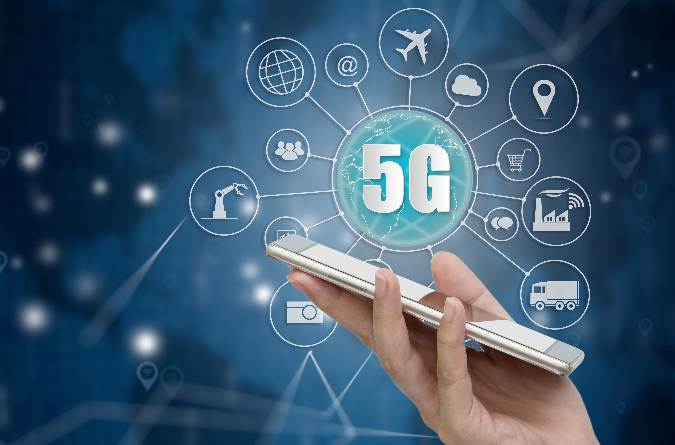The role of 5G in driving robots

The role of 5G in driving robots

While 5G seems to have received a lot of attention in terms of smartphones and their connectivity, more and more attention is now being paid to its impact on the robotics industry. 5G is the latest cellular communication technology, enabling an entirely new network that can connect almost everything. Basically, this means that the "stuff" in your hands requires less intelligence, because we can put more data in the cloud, and it can be shared more easily.
5G vs 4G
5G is just a new generation of cellular communications. It handles infrastructure better than 4G, which means it's a more efficient means of transport in otherwise challenging environments. Generally, factory automation operates in challenging Wi-Fi environments with many obstacles, such as metal structures, moving objects, and electrical noise. Now imagine a fleet of robots and other devices competing for bandwidth resources on top of this.
One day, with the advantages of next-generation cellular communications, we will be able to put robots in many time applications without relying on Wi-Fi at all. Leveraging 5G to connect directly to the cloud means businesses can reduce overhead costs and improve security because 5G-enabled devices don't have to worry about the network infrastructure on-premises.
The role of 5G in the Internet of Things (IoT)
IoT has three core elements: sensors, actuators, and activity locations. They are "things" that connect and exchange data with other devices and systems over the internet. What 5G does in IoT is to make it more accessible. IoT doesn't rely on 5G -- it can use Wi-Fi or whatever -- but 5G does make it more accessible and cheaper to communicate because it's more efficient.
For example, if you have a 4G cell tower that can only handle 10,000 customer demands at a time, and now with 5G, 100,000 or more customer demands at a time, the investment in that infrastructure is more attractive. 5G allows everything to be stored in the cloud more efficiently, so that devices are no longer needed, except for smartphones that are already connected via 5G.
Many people don't realize that they will have as much power as anyone who can afford a "great computer". This is where 5G comes in and changes the world through its role in IoT.
The application of 5G in the field of robotics
There are many ways 5G can be applied to robots, let's take Tesla as an example. Driving a Tesla is essentially driving a robot on wheels. It's a giant IoT device with a lot of computing power, and everything it does is tied to the way humans think. The way Tesla's vehicles are built requires high utilization of network bandwidth, which relies on 5G and 4G support. This not only demonstrates the application, but also the need for it.
Latency in robotics and the impact of 5G
Currently, latency is one of the main challenges facing robot developers. Latency is the delta time between when a robot or IoT device takes action based on input that must come from sensors or off-board controls. Robots are controlled in real-time for a fixed amount of time, which means they have deadlines that they must adhere to, or they can cause unnecessary safety hazards.
When it comes to networking, latency will follow. It's just a matter of solving it intelligently and including enough margins so that the delay doesn't become too much of an issue. In robots, this would work in conjunction with a safety system to prevent humans and robots from occupying the same volume of space at the same time.
For example, a fleet of robots moves synchronously to perform a task. If one of the robots takes too long to receive input to process the action, the robot loses its ability and functionality, disrupting the entire team. It's like going to a concert where the drummers lose their rhythm and ruin the whole show. Without 5G, the best way to transmit large amounts of data to operate a robot without lag is through a wired network connection, which is very limited.
5G removes these limitations, making robots smarter, easier to maintain, better upgradeable, and far beyond what we can imagine today.
what does that mean
Currently, robots are used in various industries such as retail, medical, hospitality, manufacturing, etc., but as the technology develops, the expectations will also change. Now that demand is increasing, robotics needs to be more flexible, agile and mobile, and this is where 5G comes into play. With 5G, robots can perform and move better than ever before and unlock future possibilities. All in all, 5G has capabilities that many people don't know about, and small changes can make a big difference.
It's easy to tell when consumers are dissatisfied, but addressing these issues can be challenging due to cost concerns. 5G requires new infrastructure, and building that infrastructure can be expensive. Recognizing this, once the world achieves more 5G infrastructure, the technology will be more useful than ever, and robots can be used to improve human life in dangerous locations such as oil extraction and even outer space.